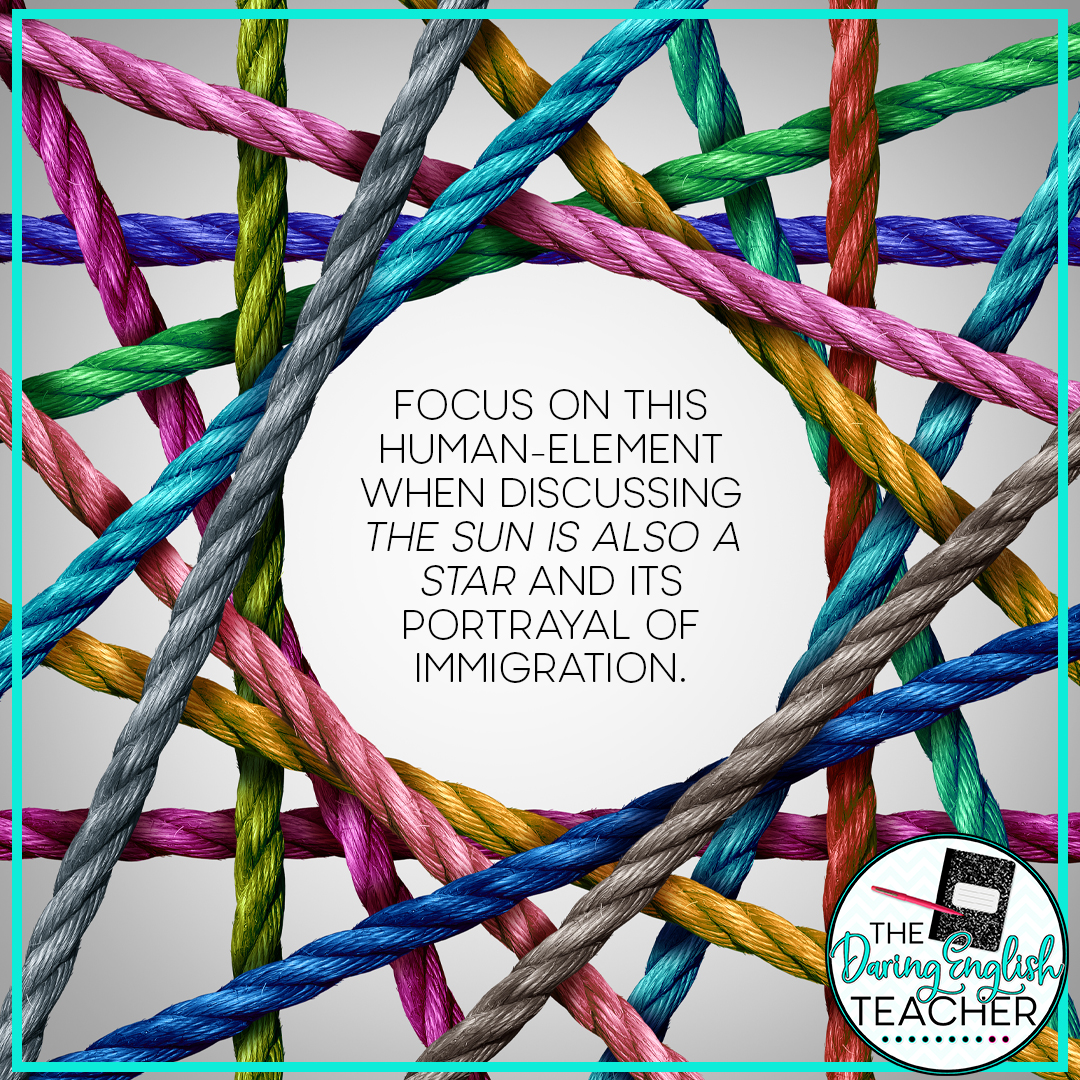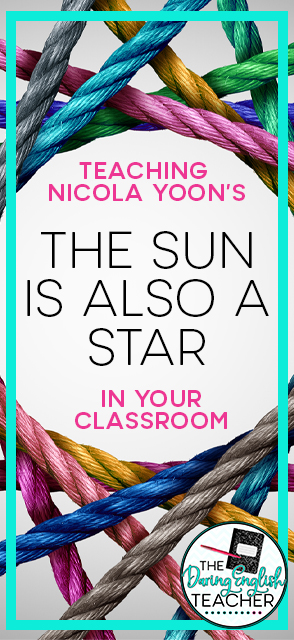At its heart, The Sun is Also a Star (affiliate link) is a novel about empathy. Yoon uses an unconventional style in her take on the teenage love story. Instead of a traditional narrative, Yoon jumps back and forth between the perspectives of the two main characters: Daniel, the aspiring poet and Yale-bound son of Korean immigrants. And Natasha, the aspiring scientist and undocumented-immigrant who came to America, from Jamaica, at age nine. Peppered throughout the book are chapters in which a nameless narrator tells us the history of the various characters we encounter as well as the various topics we encounter, such as why Korean-Americans own so many black hair care businesses and the actual science behind falling in love.
The novel takes place on Natasha’s last day in America. Due to her father getting a DUI several months earlier, her family is set to be deported that night. In between rushing around New York City looking for a miracle that would allow her to stay in America, she meets Daniel. Daniel and Natasha are foils of one another, perpetuating the myth of “opposites attract.” It’s the hopeless-romantic vs. the overly-rational science geek. Gratefully, Yoon manages to get the most out of this trope by having the two characters influence on one another—Daniel learns to pause and reflect more sincerely on reality while Natasha begins to open herself up to the possibility of fate and meaning. This is all wonderfully executed by Yoon, and there is plenty for readers of all ages and levels to enjoy. But what makes this such an important novel is its emphasis on empathy and by extension, the way Yoon challenges the misconceptions that so many Americans foster against immigrants.
Immigration is a highly sensitive and politicized topic. While we, as teachers, might be told to be a-political in the classroom, the reality is that such a thing is impossible. Today, everything is seen as political. And as educators, we will likely have students in our classes who are immigrants and refugees. The best we can do is follow Yoon’s example and focus purely on the human-element of the topic. Nowhere in the novel does Yoon get explicitly political, but nowhere is her message unclear. That is, that immigrants are just people trying to make a better life for themselves. Like anyone else, they want an education, a career, friends, to fall in love and start a family. And because of this, The Sun is Also a Star functions as an excellent tool for facilitating the essential conversation of immigration with your students. You can easily pair this novel with timely news articles to bring nonfiction and current events into the forefront of your classroom discussions.
Natasha’s dad is a great character to focus on in this context because he is far from perfect. Even on the liberal-side of the political spectrum, arguments that are sympathetic towards immigrants tend to rely on their economic or cultural worth. For example, Natasha excels at math and science. If she were to remain in America and go to college, she would contribute to the tech industry, bio-engineering industry, or similar industry—making those who view the issue of immigration solely through a politicized lens see Natasha as worthier of remaining in America. But is it required that someone excel in science and math for them to be given compassion and empathy?
Think about Richard Wright’s Native Son. Wright believed that African-Americans should be portrayed as real people in literature—not as idealized forms in the hope that White America might learn to respect African-Americans via such works and characters. Wright understood that an individual should not be forced to compensate via talent, intelligence, or otherwise for their race, gender, place of birth, or any other superficial aspect they have no control over.
So, focus on this human-element when discussing The Sun is Also a Star and its portrayal of immigration. Natasha’s dad, Samuel, is portrayed in Wrightian fashion. He’s a failed actor who drunkenly crashes into a parked police car. He spent his life bombing auditions and working odd jobs. One could argue that he has contributed nothing to America, nothing to our tech industry, nothing to our culture. But does this mean he should be deported? If so, by that logic, shouldn’t many American-born citizens also be deported? Should our wellbeing rest solely on how others interpret our talents and our intelligence?
These questions are like a loose thread, and once you start to tug at it, these misconceptions and prejudices quickly unravel. These are all questions you can pose to your students to begin a conversation about immigration and even the American Dream.
Yoon does an exceptional job at crafting her novel and characters in a way that forces the reader to confront these questions on their own. Yoon never asks these questions for you, and though she provides the answer through ingenious biographies and histories, she doesn’t hit you over the head with it. You have to realize it for yourself because Yoon understands that no one can be told to change their mind; they have to get there on their own.
As with many YA novels, there is some cursing and some suggestive material but nothing that would make you blush. It has a quick pace and is easy to read, but it never feels cheap or simple. This is a well-crafted novel, one worthy of using in the classroom for its storytelling alone. But the message that it carries and the conversation it can facilitate is what elevates it from good to exceptional.
Another Approach
If the topic of immigration is too sensitive for your classroom, simply focus on how Yoon attempts to make the reader feel empathy for each character. Begin the conversation by discussing empathy. What is it? What does it look like? What does it mean for our students? Talk about the importance of seeing things from the perspective of others. You can use the sun as a clever analogy for this aspect of the novel—By switching perspectives and showing us the world through the eyes of each character, she presents each character as the sun. They exist in the center, while the world moves around them.
Resources for Independent Reading
Literary Analysis with Sticky Notes




